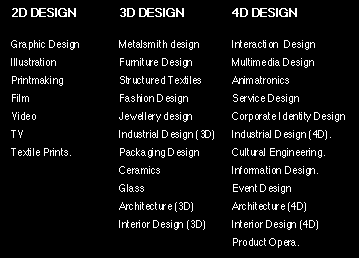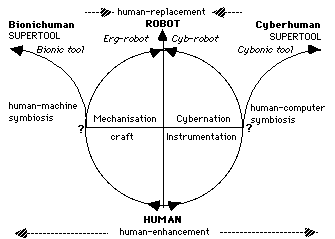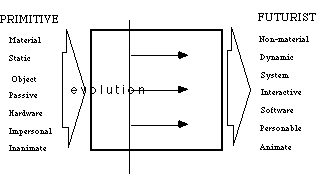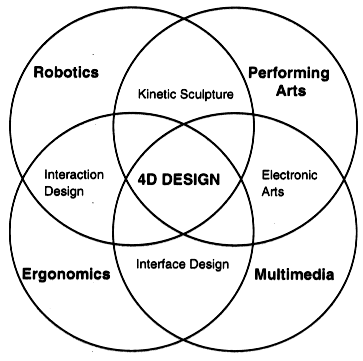
CLASSIFICATION OF DESIGN ACTIVITIES
This diagram, devised by Alec Robertson, shows the relationship of difference design activities/disciplines under 2D, 3D, and 4D headings. The requirement for 4D is that there is some complex dynamic form as a result of metamorphic change of behaviour due to the involvement of the user/viewer/environment.

CYB-ERG
This diagram, devised by Alec Robertson, shows a basic framework of Cyb-erg
depicting the evolution of artefacts. It is based on the notion that
artefacts are designed as extensions of human physical and mental
functions. The left half is concerned with physical tool evolution and the
right half mental tools. At the line of 'automation' one of two
directions can be taken - towards 'robot' or 'supertool'. Any artefact
can be placed at a certain stage of evolution and questions are then asked
about possible advancement up the Cyb-erg framework to give new
functional capabilities to a tool/product.
Format, devised by Alec Robertson, provides a framework for advancing the
form of a product. Attributes are listed and these have values derived
from either subjective judgements or quantitative auditing methods. A
prodcut will have a signature and as attributes are developed from the
primitive to the futurist this will change.

FORMAT
